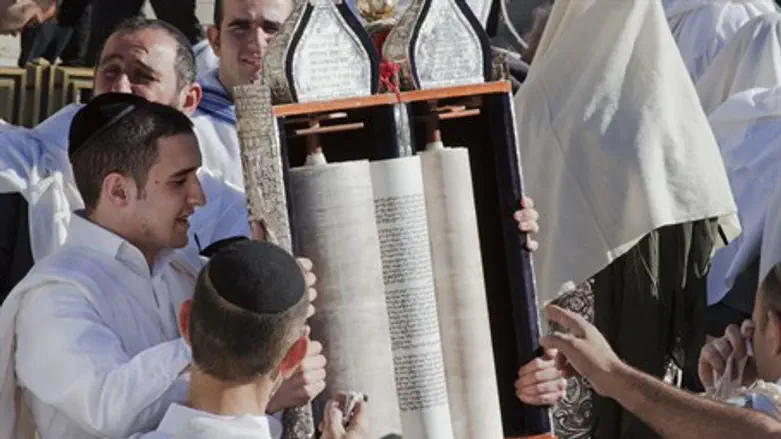
We've got 54 sedras in the Torah and 14 of them pair off to form the seven double-sedras that are read either together or separately, when necessary for our yearly cycle to end and begin anew on Simchat Torah.
Although Yitro and Mishpatim are not one of the seven pairs, we would like to make a case for their very close connection.
Try this: Ask someone who knows something about the Torah, in what sedra is the famous response of the Jewish People to G-d's offer of the Torah - NAASEH V'NISHMA? Most people will answer YITRO (maybe you would have too) and they'd be wrong. In Yitro, the answer of the people was, all that G-d speaks to us, NAASEH, we shall do. They responded with NAASEH again at the end of Mishpatim, and a few p'sukim later, we find their most famous - almost magical - response of NAASEH V'NISHMA.
This question goes along with: in which sedra do we read of the einai Experience, a.k.a. Matan Torah? The correct answer is in Yitro and Mishpatim. These two sedras are "joined at the hip".
The episode at the beginning of Parshat Yitro, the one that followed the Torah's account of his coming to Moshe with Tzipora and her (and Moshe's) two sons. The account of the father-in-law looking over his son-in-law's shoulder while he works, to see what he does for a living (to put it in today's context for a flippant moment). That whole business of judges for 10, 50, 100, and 1000 people, handling the simpler cases and bringing the difficult questions and disputes to Moshe... all that belongs in Mishpatim. It took place after Matan Torah. It is out of place in Yitro. Last week, we suggested reasons for its place before Matan Torah. Without contradicting that idea, we are saying now that the court system that Yitro proposed is the necessary prerequisite of Mishpatim.
In fact, it was at Mara that the people received an introduction to some of the Torah's mitzvot - including some of Mishpatim. They needed a foretaste of the day-to-day way of life to which they would be committing. That was a couple of weeks before Maamad Har Sinai. So the topic belongs before the account of Matan Torah, as well as after it. And that's what we have with the combined Yitro-Mishpatim super-sedra.
On the other side, the fact that the Torah continues the narrative of Matan Torah at the end of Mishpatim - or to put it differently, the fact that the Torah interrupts the account of Matan Torah with the many details of Parshat Mishpatim... Let's take back the word interrupts and replace it with interjects.
None of Parshat Mishpatim is an interruption of Matan Torah; it is an expansion of the same idea, the same process.
On the day of Matan Torah, we heard the two word phrase - LO TIGNOV. That's it, as far as stealing is concerned. What about all the details? That's what G-d taught Moshe Rabeinu on Har Sinai in the 40 days and 40 nights. And when Moshe came down from the mountain (let's leave the terrible episode of the Golden Calf out of the picture for now), he said to the people the equivalent of, "you heard LO TIGNOV. This is what it means. This is what is included in it. This is the punishment structure of the various aspects of stealing.
Of course, most of the rest of the Torah also gives us the fuller picture of what Torah is and what G-d wants of us. But Mishpatim is a solid start in that direction. A solid collection of mitzvot that will allow us to break for the Mishkan sedras (and the tragic event that we are leaving out of the picture for now), before we continue with the other mitzvot.
Shabbat was first introduced to us with the account of creation. We then added to that the aspects of Shabbat related to the manna from Parshat B'shalach. In Yitro we find the commandments of Shabbat - the positive commandment to remember Shabbat and make it holy. The prohibition of all manner of Melacha, creative activity. In Mishpatim, the other side of the Melacha-prohibition coin is introduced, as we have presented in the Sedra summary. Two sides of the same coin are sort of like Siamese twins. And the Chagim that are mentioned in Mishpatim add to our picture of Shabbat. Same kind of Kedusha. And the introduction of Sh'mita (with the detailed prohibitions being found in Parshat B'har) also fills out our picture of Shabbat. There's a lot more that link Yitro and Mishpatim.
Click here to download the podcast

